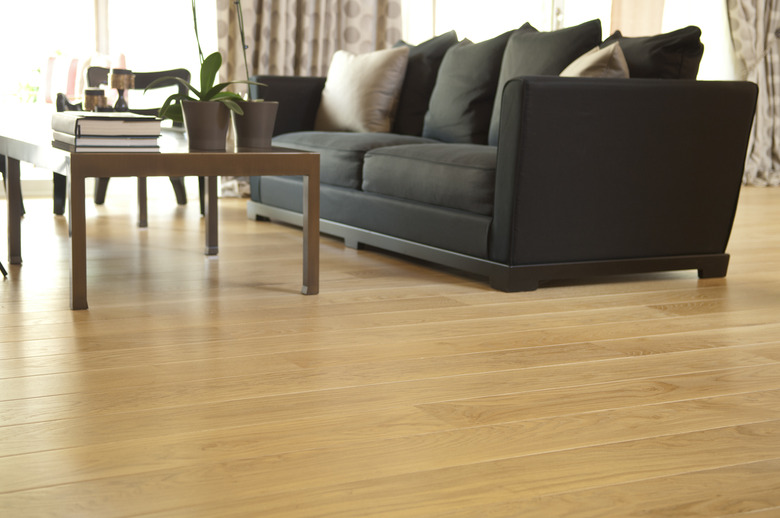How To Strip Wax From Hardwood Floors
We may receive a commission on purchases made from links.
Whether you wax your hardwood flooring to fortify a penetrating oil finish or to enhance a film finish, such as shellac or polyurethane, there's no way to avoid the need to periodically strip the wax. It never really hardens, and it continues to accumulate microscopic dirt particles. Moreover, some waxes yellow as they age. The National Wood Flooring Association (NWFA) recommends using mineral spirits to strip wax. Less toxic alternatives are available, but most require water, which isn't good for your floor.
You Need a Solvent
You Need a Solvent
To gain a better understanding of how to remove it, it's good to have an idea of the ingredients in floor wax. While waxes vary, most contain an emulsion of paraffin or carnauba — an extract from Brazilian palm trees — in a solvent. When you apply the wax, the solvent evaporates and only the wax coating remains. Because it doesn't cure and remains somewhat soft, you could technically scrape wax off a floor with a sharp blade, although this would be time-consuming and would almost certainly damage the floor finish. A more efficient method is to redissolve it in a solvent and wipe it off.
What Dissolves Wax?
What Dissolves Wax?
The ideal solvent for dissolving paraffin or carnauba wax is the one in which it was already dissolved when you applied it, which is usually mineral spirits. That's the ingredient that gives most wax products their characteristic odor. Stronger solvents, such as acetone and lacquer thinner, will also remove wax, but they'll also remove the finish, so they're out. Hot water can dissolve wax — especially if it contains vinegar, ammonia, washing powder, or a similar cleaning agent — but no flooring manufacturer would recommend using it. Leaving hot water on your flooring long enough to dissolve wax is just asking for the water to seep through the cracks, swell the wood, and ruin your floor.
Things Needed
The NWFA-Approved Method to Remove Wax
The NWFA-Approved Method to Remove Wax
To make many cleaning jobs easier, you can go to the store and buy a special implement that automates the task or at least eliminates the need for hard work. Wax removal isn't one of these jobs. Get a good pair of knee pads, and set aside an afternoon for an average living room and kitchen.
1. Prepare an Applicator
Fill a spray bottle or a plastic condiment squirt bottle — such as you use for ketchup — with odorless mineral spirits. Despite the name, this product — also called white mineral spirits — isn't completely odorless, so keep the room well-ventilated while you're working. Wear a respirator if you're sensitive to VOCs.
2. Dampen the Floor
Spray the solvent longitudinally along the floor, moistening about three or four boards for a distance of about one foot. Be sure to moisten the cracks between boards to dissolve the wax there.
3. Scrub Off the Wax
Scrub the area along the grain of the wood while the solvent is still wet — using a green kitchen scrubber or 0000 (ultra fine) steel wool — to loosen the wax. Rub the rest of the wax off the floor with a rag.
4. Check the Rag
Wet the same area again and rub off the solvent with another rag. Look at the rag, and if you see wax residue, moisten again and repeat. Continue until a clean rag shows no discoloration, then move on to the next section of the floor.
Tip
You'll need plenty of rags for this procedure. This may be a good time to cut up an old bed sheet or worn towels you've been meaning to replace them.
Commercial Wax Removers
Commercial Wax Removers
You can buy commercial wax removers to make this job less onerous, but read the label carefully before purchasing one. Many are intended for vinyl, linoleum, and tile, but not hardwood. You need a product approved for hardwood floors, or you risk damaging the floor finish when you strip the wax.
